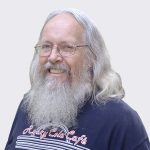CV’s First Inhabitants – First Contact
The village of Wiqangna in the Crescenta Valley would not have been in the path of the first Spanish explorers to venture north into the Los Angeles area. However, they would have been touched hard by the successive waves of disease that followed them. Smallpox, measles and influenza would have passed quickly from village to village. We don’t know how many died in those epidemics, but it was probably a high percentage. As their leaders died, confusion and disillusionment undoubtedly fractured their social structure. The shamans (healers) were helpless against the contagions.
In 1769, the land expedition of Portola passed through the Los Angeles basin, within 20 miles of Wiqangna, and the tomyaars (chiefs) of each village decided to let it pass through. But in 1771, a party of priests, soldiers and porters approached with the intention of establishing a mission. The following is a fictionalized account of real events that took place in September 1771.
The Wiqangnan villager had gotten up early, had his bath and a quick bowl of warm acorn mush. He was intending to take a long walk today, carrying a load of soapstone bowls he had crafted to trade in the village of Shevaanga (today’s San Gabriel). He had survived a bout with the latest mysterious disease that had killed several other villagers, and he had regained his strength. He transited the valley, passed the village of Hahamongna (in the Arroyo Seco) and after a couple hours entered Shevaanga. It was in a beautiful area, well watered, thick with oaks, wild grapes and roses.

president of the Historical Society
of the Crescenta Valley and loves local history. Reach him at
lawlerdad@yahoo.com.
But the village was in an uproar. A party of strange men was approaching! They had heard from villages far to the south that the strangers were not just passing through, but intended to stay and establish their own village. The tomyaar of Shevaanga made the decision to keep them out of their territory. The villagers who weren’t sick were preparing for war. The Wiqangnan decided to help.
The warriors set up an ambush at the edge of the river (San Gabriel River). Warriors hid upstream and downstream to hit the flanks of the strangers if they crossed the river. The Wiqangnan joined the tomyaar and a group of warriors in the open between the hidden warriors to lure the strangers in.
They could smell the strangers long before the heard them or saw them. Their stench was unbelievable. Then they heard clanking, voices and the weird noises the strangers’ huge dogs made (their pack mules). The strangers broke through the trees on the other side of the river and began wading across. There were 10 soldiers in the lead, with two priests behind and several mules and muleteers. The warriors yelled at them to stay away but the strangers kept coming, so the warriors and the tomyaar shot arrows toward them to warn them. Two of the soldiers fired their guns. The Tongva knew about guns from previous encounters, but they were shocked by the loud noise they made. The warriors aimed their arrows true now, but the arrows bounced off the armor of the lead soldiers. The other soldiers fired, knocking down one warrior.
As soldiers reached the bank, the warriors fell back and the hidden warriors moved silently in through the brush on either side of the strangers in a pincer movement. The warriors would easily kill them hand-to-hand.
Just as the trap was about to be sprung, the two priests unrolled a painting of the Virgin Mary and held it up it to the tomyaar. The tomyaar thought the beautiful art must be a picture of the Tongva spirit Chukit who, impregnated by lightning, bore a male child the Tongva regarded as “the Son of God.” The tomyaar yelled to stop the attack. He decided on the spot to welcome these visitors, as they obviously shared the same faith. He instructed his warriors to lay down their weapons and help the strangers. The Wiqangnan ran all the way back to Wiqangna to tell this amazing story.
But within a few days, the tomyaar realized he had been mistaken, and the conflicts began.
